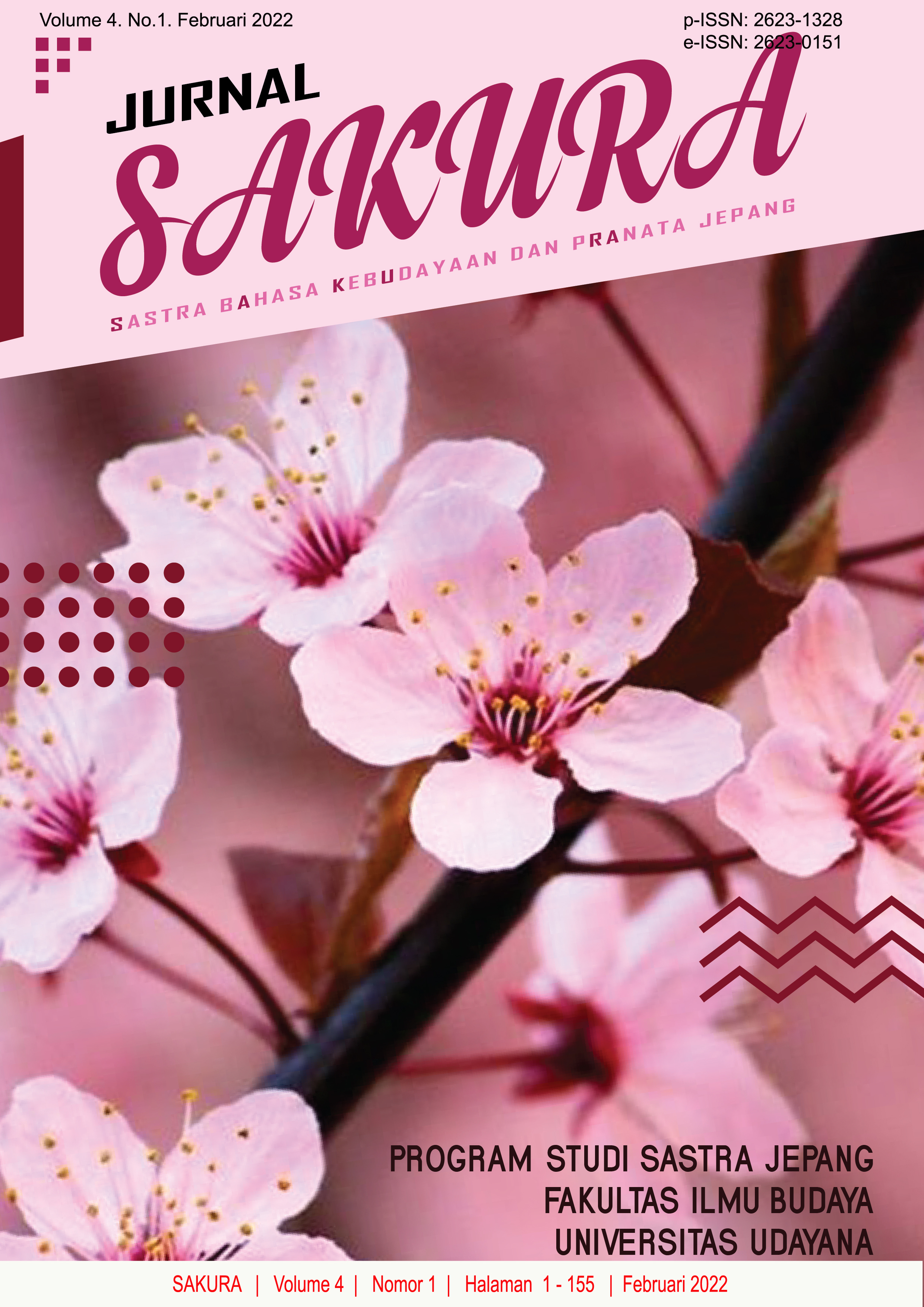Kanyouku Dengan Unsur Tumbuhan Pada Media Sosial Twitter
Abstract
This study only determine the meaning, type and process of forming plant based kanyouku using posts on Twitter from Japanese users in 2020 as a data source. This research used kanyouku formation theory from Miharu and the semantic theory from Chaer which is supported by kanyouku meaning by Inoue. The data accumulation method used in this research is the observation method, by observing the use of language on Social Media Twitter. Then, the methods used in data analysis are the split method and the equivalent method.. The results obtained in this study are first, based on the lexical meaning of plant based kanyouku on Twitter social media consists of the lexical meanings of ki, hana, kusa, take, sakura, momiji. The most used lexical meaning is Hana. Second, based on the idiomatic meaning, it is divided into five types of idiomatic meaning, namely, 1) the meaning of kanyouku which state the senses of feeling or emotion, 2) the meaning of kanyouku which state the state of the body, nature/character, behavior/attitudes, 3) the meaning of kanyouku which state behavior, motion, and actions, 4) the meaning of kanyouku which state conditions, levels and values or prices, 5) the meaning of kanyouku which state society, culture, and life. Third, there are three ways to form plant based kanyouku on Twitter social media, namely verb idioms, noun idioms, and adjective idioms. Fourth, there is kanyouku with two different idiomatic meaning, namely kime ga komakai idiom. Fifth, there are different kanyouku while having the same idiomatical meaning, namely hatake suiren and ki ni yorite sakana o motomu kanyouku.
Downloads
References
Chaer, Abdul. 1990. Pengantar Semantik Bahasa Indonesia. Jakarta: Rineka. Cipta.
Chaer, Abdul. 2014. Linguistik Umum. Jakarta: Rineka Cipta.
Djajasudarma, Fatimah. 1999. Pengantar Kearah Ilmu Makna. Bandung :Refika
AditamaMuneo, Inoue. (1992). Reikai Kanyouku Jiten. Tokyo: Sotakusha.
Miharu, Akimoto. 2003. Yoku Wakaru Goi. Tokyo; ALC













